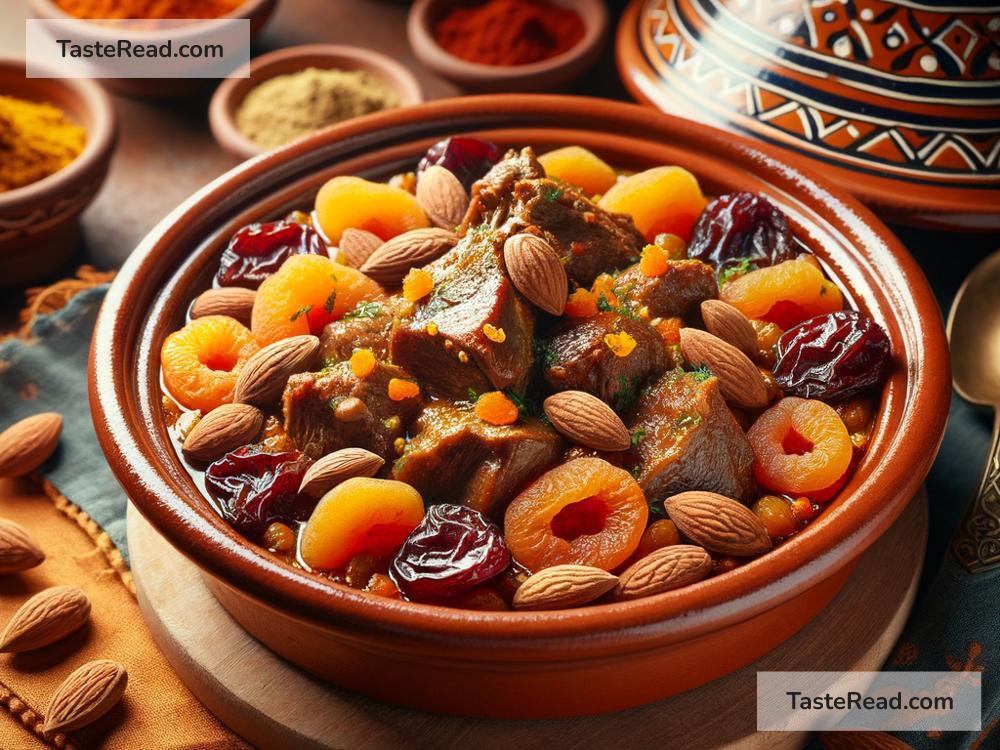Reveling in Aromatic Moroccan Tagine Traditions
Morocco is a country that instantly captures your heart with its vibrant culture, colorful markets, and mouthwatering cuisine. Among its many culinary treasures, the tagine stands out as a symbol of Moroccan cooking at its finest. This unique dish is not just food—it’s a tradition. The rich flavors, exotic spices, and careful cooking methods make tagine a feast for both the senses and the soul.
So, what is a tagine? The word “tagine” actually has two meanings. It refers to both the dish itself and the special pot used to cook it. A tagine pot is a clay cooking vessel with a wide, shallow bottom and a cone-shaped lid. This design traps steam, keeps the heat consistent, and helps the dish stay moist while the flavors blend together beautifully. In Morocco, the tagine is as much about the cooking process as it is about the final result.
A History Layered with Tradition
Tagine cooking has deep roots in Moroccan history. Its origins trace back to Berber cultures over a thousand years ago. The Berbers, native to North Africa, created slow-cooking methods to prepare hearty and flavorful meals using local ingredients. As Morocco became influenced by Arab, Andalusian, and Mediterranean cultures, the tagine evolved, becoming a dish filled with unique spices and flavors from these regions.
What makes Moroccan food, especially the tagine, special is its balance of spices and ingredients. Moroccan cooking is famous for using warm spices like cinnamon, cumin, turmeric, and ginger, often mixed with sweet and savory elements. This allows tagine to deliver a layer of flavors that excite your taste buds.
How Tagine is Made
Making a tagine is an art, but it’s not complicated. The cooking technique is slow and steady, which means you don’t need fancy skills—just patience. A traditional Moroccan tagine starts with a base of onions and olive oil. Then comes the protein, such as chicken, lamb, or fish, though vegetarian tagines are also popular.
After you pick your main ingredient, it’s time for the spices. Moroccan cooks often mix their own spice blends, which might include saffron, cinnamon, cumin, paprika, and more. Next, the dish takes shape with a handful of fresh vegetables, dried fruits like apricots or raisins, nuts like almonds, and a splash of broth.
The cone-shaped lid is placed over the pot, trapping steam and blending the flavors as the dish simmers gently. Tagines are often cooked over charcoal or low heat to allow the ingredients to soften and meld perfectly. The result? A delicious, aromatic stew that tastes even better because of the time and care put into making it.
Tagine: More Than a Meal
In Morocco, a tagine is more than just food—it’s a way to connect with family, friends, and tradition. Meals are often a time for people to gather, share stories, and enjoy each other’s company. The tagine pot is brought straight to the table, and everyone digs in, often using Moroccan bread to scoop up the delicious stew.
For locals, cooking a tagine is a form of pride and cultural expression. Recipes are passed down through generations, each family adding their own twist to the dish. Learning the art of tagine cooking is considered a valuable skill and a way to preserve Moroccan heritage.
The Many Varieties of Tagine
One of the best things about tagine is its versatility. There’s no single recipe, and the possibilities are endless. Some popular types of tagine include:
- Chicken Tagine with Preserved Lemon and Olives: This classic dish features tender chicken flavored with tangy preserved lemons and briny green olives.
- Lamb Tagine with Prunes and Almonds: A rich combination of succulent lamb, sweet prunes, and toasted almonds makes this tagine a favorite for special occasions.
- Vegetable Tagine: Perfect for vegetarians, this tagine is loaded with seasonal vegetables like zucchini, carrots, and potatoes, simmered in a fragrant spice blend.
- Fish Tagine with Tomatoes and Peppers: This lighter option highlights fresh fish cooked with tomatoes, peppers, and a touch of chili for extra flavor.
No matter what ingredients you choose, the result is always comforting, flavorful, and deeply satisfying.
Tagine Outside Morocco
Thanks to its incredible flavors and unique cooking style, tagines have become popular far beyond Morocco. Travelers who visit the country often leave inspired to recreate tagines at home. Many kitchen stores worldwide sell tagine pots, and the spices used in Moroccan cooking are now widely accessible.
Even if you don’t have a clay tagine pot, you can still prepare the dish in a regular heavy-bottomed pan or slow cooker. While the experience might not be as authentic, you’ll still enjoy the amazing blend of Moroccan flavors.
Experience the Magic of Tagine
If you’re ever in Morocco, make sure to enjoy a tagine—not just once, but as often as possible. Visit a local restaurant, eat with a family in their home, or even take a cooking class to learn how to make it yourself. There’s nothing like tasting tagine in its birthplace, surrounded by the warm hospitality of Moroccan culture.
Even if you’re far from Morocco, a tagine can transport you there with every savory bite. It’s a dish that reminds us to slow down, enjoy the process, and celebrate the richness of life. So, gather some fresh ingredients, dust off your spice jars, and get ready to revel in the aromatic traditions of Moroccan tagine cooking. Who knows—you may just discover your new favorite meal!


